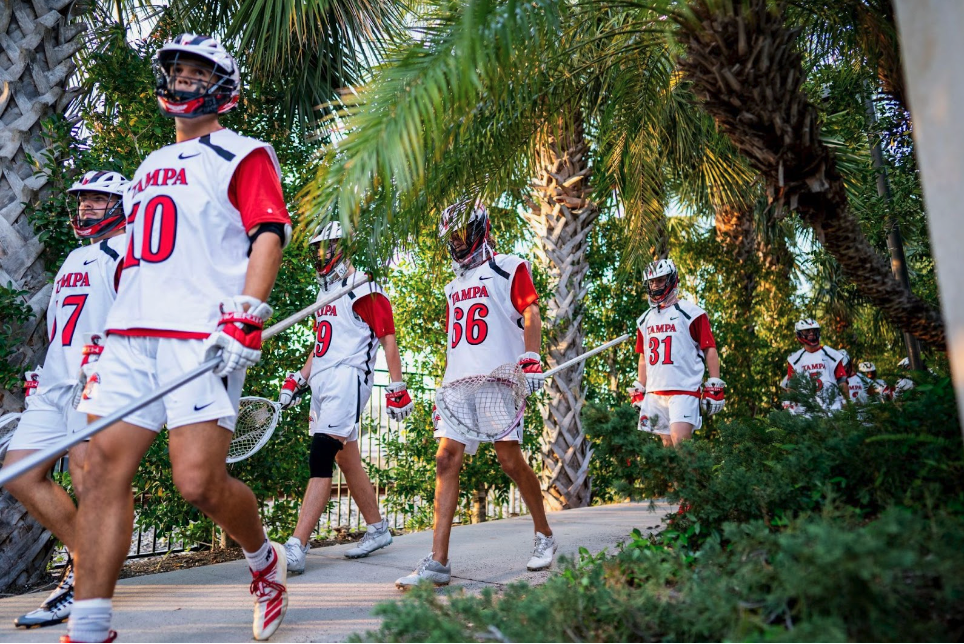by: Cassie Gaudes
You go to your local mall where you spend time walking in and out of your favorite stores. You need some new clothes but the paycheck you got just isn’t going to cover the cost or maybe you think $30 for a plain cotton t-shirt is ridiculously high. With many fashion companies charging 400% more than what clothes cost to make, it’s no wonder people, especially the younger generations, are currently turning towards thrift and vintage shopping, buying their clothes, shoes, and accessories second-hand, at vintage stores, to be vintage it has to be about 20-years-old or thrift stores, even in Tampa.
“It started out just buying flannels and other grungy outerwear pieces, but now I buy complete outfits at the thrift store,” said Patria Casalduc, recent University of Tampa graduate. “I can’t justify buying clothing that I’m not absolutely blown away by for more than $5 since I’m so used to thrift store prices now. Why would any college student spend hundreds on very few pieces when you can get multiple outfits that are probably better for $20 or less if you really know how to thrift.”
When asked if thrift and vintage stores were becoming more popular, especially among teens and young adults, Rebecca Kruse, owner of Sherry’s Yesterdaze Vintage Clothing and Antiques in Tampa, said, “Absolutely, they are much more vocal about it. There has been a huge support from that age group.”
Many young second-hand shoppers find some great deals and clothes that they love and wear to events as well as in their everyday life.
Emma Wulff, UT alumna, buys a lot of shirts and shorts when she goes thrift shopping. She said she has gotten, “a pair of high waisted shorts, button-up shirts with fun floral patterns that I love to wear to concerts or music festivals, many cool vintage t-shirts. They were definitely under $5. And I do remember when I bought my shorts, I bought multiple pairs and it was all under $20.”
Danielle Ferrari, the owner of a local thrift shop, Valhalla resale, explained that many women liked to change out their wardrobe quite often, so she came up with a membership option for customers to rent the clothes at a low price and then they can come back later to exchange. She liked this idea partly because it would be helping the environment.
When clothes are thrown into landfills, the chemicals in them can leak into the ground, and when they are burned, they release chemicals into the atmosphere. The US Environmental Agency reported that the fashion industry is the second most polluting industry. By buying second-hand, fewer clothes get wasted and cause less environmental damage.
Besides a cheaper cost and friendlier the environment, you never know what you are going to find when you walk into a thrift or vintage store. New things are always coming in from estate sales and people dropping their things off, so stores will have something new and exciting.
“It’s kind of like an Easter egg hunt,” said Kruse. “You never know what you are going to get.”
“Keep looking don’t just glance at a rack, go into it and sort every shirt”, said Brooke Nolan, junior film major at USF. “There’s cheaper and better finds, also more unusual pieces for statement looks.” Some of her best finds were a Gucci purse and a vintage Chanel shirt.
Emma Hintz, a Northeast High School graduate in St. Petersburg, said one of her best finds was a pair of Nike Air Force 1’s. “They were $7, and they were in really nice quality, only worn a few times. Nike Air forces are normally around $70.”
In addition to clothes, shoppers can find other unique finds besides clothes.
“I’ve gotten cool posters at thrift stores of the Beatles, Breakfast Club, and Ferris Bueller’s Day Off and they were each one dollar,” said Wulff. “I’ve also found a Polaroid camera at a Goodwill and got it for $20.”
Helping the thrift and vintage industries are previous fashions coming back in style. With magazines like Cosmopolitan and Harper’s Bazaar reporting on celebrities wearing clothes and accessories from decades past, it’s no wonder people, especially teens and young adults, are throwing back.
“The 1900s is a really big deal right now. All the grunge clothes, anything nineties, the multi-colored windbreakers, is really popular right now. I can’t keep it on the shelves,” said Kruse. “For men, it’s the 1980’s Members Only jackets.
What about the future for second-hand stores? Many think the future looks good.
“People are beginning to be more conscious and are wanting to shop local. I’m looking at clothes that are 70-years-old and are still in perfect condition. People want that,” said Kruse. “I think every year more people will become more conscious of the environment.”
According to IBIS World, a leader in global business intelligence that specializes in industry market research and procurement and purchasing research reports, the resale market has outperformed the overall retail market and now has a value of 20 billion dollars. Many clothing companies including H&M and Forever 21 are not making as much as they used to, which is causing some issues for the companies.
Online thrift stores have also been reporting a massive surge in sales. Thredup, a popular online used clothing, and accessories website claimed it sold 30,000 items every day, with one in three women having shopped second-hand within the last year.
What was once considered gross, for poor people, and uncool now is appealing to many. With younger generations making up a huge part of the fashion market now on board, thrift shopping has a promising future.
“I definitely think it’s becoming more popular [thrift shopping],” said Wulff. “I remember people in high school thought it was weird or thought buying someone else’s clothes was gross, but now thrifting is seen as hip and cool.”
Cassie Gaudes can be reached at cassie.gaudes@theminaretonline.com




